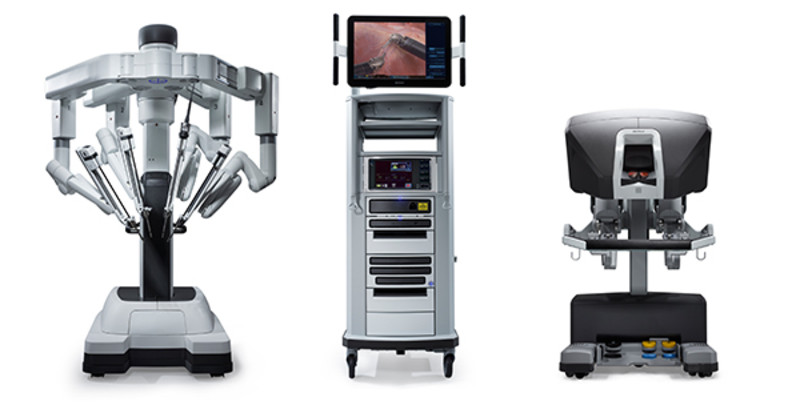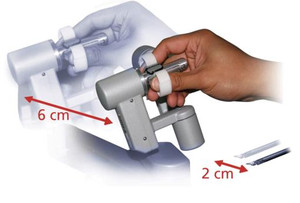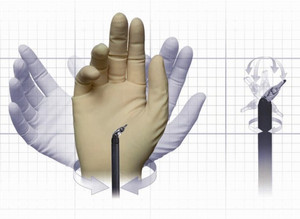Diagnostic and treatment spectrum
The medical services of Clarunis University Center for Gastrointestinal and Liver Diseases cover the treatment and therapy of all diseases of the abdominal organs and thyroid gland. The doctors consulted according to speciality/disease define the joint treatment standard and expedite teaching and research in these disciplines.
Clarunis provides abdominal surgery and gastroenterological basic care at both of its locations, St. Clara Hospital and University Hospital Basel. Clarunis performs highly specialised operations, where it has been scientifically established that hospitals and surgeons who frequently carry out these operations have a lower complication rate and better long-term results at the location with greater experience.
Robot-assisted minimally-invasive: da Vinci Xi®
Clarunis relies on robot-assisted, minimally-invasive surgery in the form of da Vinci Xi®. The da Vinci Xi® robot is used especially in complex operations, such as esophagectomy, and where space is limited, such as in the lesser pelvis, or in adipose patients.
Thanks to its expertise and high case numbers, Claraspital has been designated as a reference centre for highly specialised, minimally-invasive da Vinci Xi® abdominal surgery: The manufacturer Intuitive Surgical sends participants in its da Vinci® technology training programme to Claraspital for introductions and further training courses. In the whole of Switzerland, Claraspital is the first and only da Vinci Xi® reference centre and is one of only a few centres Europe-wide.
The da Vinci system consists of the actual robot with moveable arms that carry a camera and instruments, a central calculating unit and operating console.
During the operation, the surgeon is not, as otherwise customary, directly at the operating table, but instead controls the operating instruments with small movable joysticks from the operating console. The robot implements the manual movements of the operator precisely; movements are jitter-filtered.
Apart from such achievements as laparoscopy (keyhole surgery), smaller skin incisions, less loss of blood and fewer post-operational pains, as well as more rapid recovery and convalescence, the da Vinci offers clear advantages through an improvement in the instruments' scope of movement and precision. By contrast with laparoscopic instruments, which are restricted in their freedom of movement, da Vinci instruments have joints that ensure they can be turned in every spatial direction with the same degrees of freedom as a human hand.
Controlling them is very intuitive, as a result of which after a short time the surgeon feels that their hands and instruments have become one. The freedom of movement of the robot arms with the sophisticated instruments and high resolution 3D vision with up to 10-fold magnification of the operation area permit better recognition of important structures.





